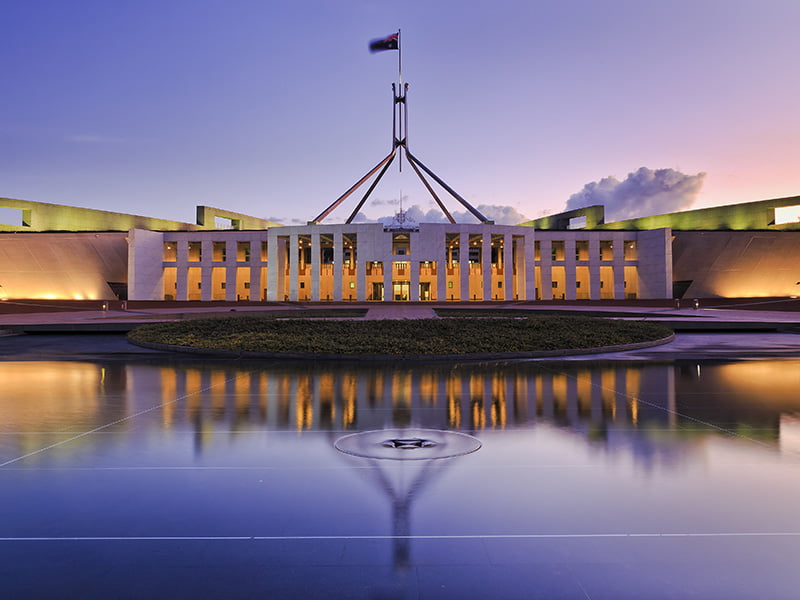For most of my time as economist, we have avoided or danced around discussion of industry policy in Australia, adopting a common narrative about not wanting or being able to ‘pick winners’ and reflecting on failed industry policies from days gone by.
Interestingly, however, the NSW government is currently in the throes of developing an Industry Policy White Paper, and the idea in one guise or another, is being raised more frequently in and around critical policy conversations.
There are a number of factors underpinning this in my view.
Firstly, more and more countries that we consider peers or competitors are adopting more strategic approaches to their economic development, leveraging science and technology and innovation more broadly.
Secondly, there is a growing recognition that just when we need to see greater dynamism and resilience, the sophistication and diversity of the Australian economy is going backwards. While most nations have increased gross domestic spending on R&D in the past 10 years, Australia has dropped to 1.8 per cent of GDP against an OECD average of 2.6 per cent.

In the International Institute for Management Development’s (IMD) 2022 World Competitiveness Yearbook, Australia ranked 57 of 63 countries for economic complexity and 52 for our export concentration. In the same IMD study only about a quarter of executives identify Australia as having a dynamic economy; and research shows that Australian businesses and industries are moving further away from, not closer to, the global productivity and technology frontier.
Most importantly, Australia like other countries, is facing challenges and opportunities associated with well understood ‘mega trends’ including climate change, population ageing and digitisation. The impacts of these trends are quite franking bearing down and will require us to leverage science and tech insights for all that we can as well as applying significant financial and human resources – at a time when there is increasing call on both.
Among our members there is genuine interest in how we can better leverage science and technology to reverse and respond to these trends. With the support of Microsoft, CEDA conducted a series of workshops and one-on-one interviews with leaders across business, government and academia to tackle this issue.
The key aim of these discussions was to move beyond many of the frankly well-rehearsed Australian innovation problems. What our discussions revealed was that there is much to celebrate in Australia and many examples of positive approaches to better leverage science and technology, but that what is missing is a more strategic ambition – one which needs to be shared across sectors and governments – and a more unified approach.
There was also identified a clear desire for a compelling national ambition that connects industry, innovation and science priorities – in other words, clear captaincy of an industry strategy. Importantly, this is not a call for government captaincy alone, but rather for all sectors to share in this accountability and to do so consistently.
The experts we consulted also emphasised the importance of a turbo-charged focus on building capabilities, and on a significant and sustained lift in collaboration between members of the innovation ecosystem.
The recent Jobs and Skills Summit referenced sectors of focus including quantum, ‘new’ energy, agriculture, and the ambition to grow tech jobs and businesses, and there was a clear call for Jobs and Skills Australia to play a strategic workforce planning role. Overarching this strategic approach to capabilities should be a strategic approach to the sectors and industries that Australia will need to be at or close to the global technology and productivity frontier.
This is of course about clean energy and renewables, but also about how we can better leverage the investments that we will need to make in defence in coming decades, and in developing truly best practice approaches to the delivery of human services in support of broader wellbeing. This is going to require significant joined up investment and workforce planning and concerted effort to remove barriers to and better enable scale where it is needed for success.
The likelihood that we will achieve this without captaincy and collaboration to drive capability seems slim. The fact that we have not done some of this well in the past does not mean we should not respond to the need to better in and for our future.
Melinda Cilento is the chief executive of the Committee for Economic Development of Australia (CEDA)
Do you know more? Contact James Riley via Email.

Let me rescue you from this “dancing around”. Our industry policy, as determined by the Summit and the Budget, is all-time mass migration, droves of international students, real estate forever, and low-taxed resource extraction.
Clearly, that’s not the pathway to “dynamism and resilience, sophistication and diversity”, is it. There’s nothing to stop an “independent” think tank like CEDA from saying so.